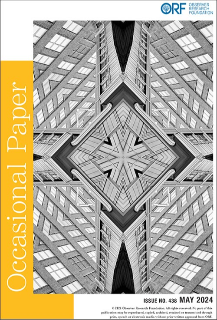Informed and aware passengers and staff members remain two of the most effective counter-terrorism measures to safeguard vulnerable mass transit systems like Delhi Metro.
Investments in setting up a regular training course for the staff in identifying suspicious objects and persons and understanding how to respond to such threats will go a long way in strengthening the increasing Metro network in Delhi.
In London, for instance, the security agencies responsible for the safety of the Underground train network have evolved a HOT method to identify suspicious objects in the rail network. The staffers are trained to identify package or objects that are Hidden, Obviously suspicious and not Typical of the environment. They are advised on how and whom to report if such an object or package is detected. Several metro and city rail operators in other countries, including the US, have adopted the HOT method. There is an urgent need for Delhi Metro to create a such a training programme.
It is also important for the staffers, both the police as well as the civilian, to know about the potential threats to the railway network and the techniques and methodologies terrorists and terrorist groups are capable of using to target the rail network. For instance, the Metro staffers must not only remain informed about possible chemical and radiological threats but also be trained to handle such situations.
Staff readiness is tested at random by surprising checks by senior officials and mock exercises.
The staffers also need to be given a regular briefing on the potential threats facing the rail network. This briefing should be handled by a security or police official or an outside expert. The briefing capsule should include the kind of threats railway networks like Metro faces and the who’s who of terrorist groups who have the capability to carry out such attacks. The capsule should include an analysis of recent attacks on the railway networks within India as well as abroad.
Like the staffer, adequate attention must be paid to inform the passengers about the potential threats and how and whom to report if they were to find an unidentified object in the railway network. Some of the billboards, lying unused, can be utilised for alerting the passengers. Regular messages inside the trains and stations, with details on contact persons or telephone numbers, can be an easy measure to adopt.
A force multiplier for security inside and outside the trains would be increased visibility of security personnel. Rail networks world-wide have increased the strength of the security personnel in the recent years. There has also been a marked rise in the visibility of the security personnel by wearing brightly coloured vests for easy identification and random patrols of the station, station surroundings and inside the trains. These visibility exercises are increased during festival seasons and other holidays when the potential of an attack remain high.
Another best practice adopted by several rail authorities is the increased use of canine teams. In the US for instance, 21 out of 32 rail operators use canine teams to patrol the stations and trains.
These are some of the measures adopted by other Metro/rail operators in the world which the Delhi Metro authorities can ponder over as part of a comprehensive risk management programme to safeguard the passengers and the rail infrastructure while making it difficult for terrorists to subvert the system.
Wilson John is Senior Fellow, Observer Research Foundation
The views expressed above belong to the author(s). ORF research and analyses now available on Telegram! Click here to access our curated content — blogs, longforms and interviews.




 PREV
PREV

